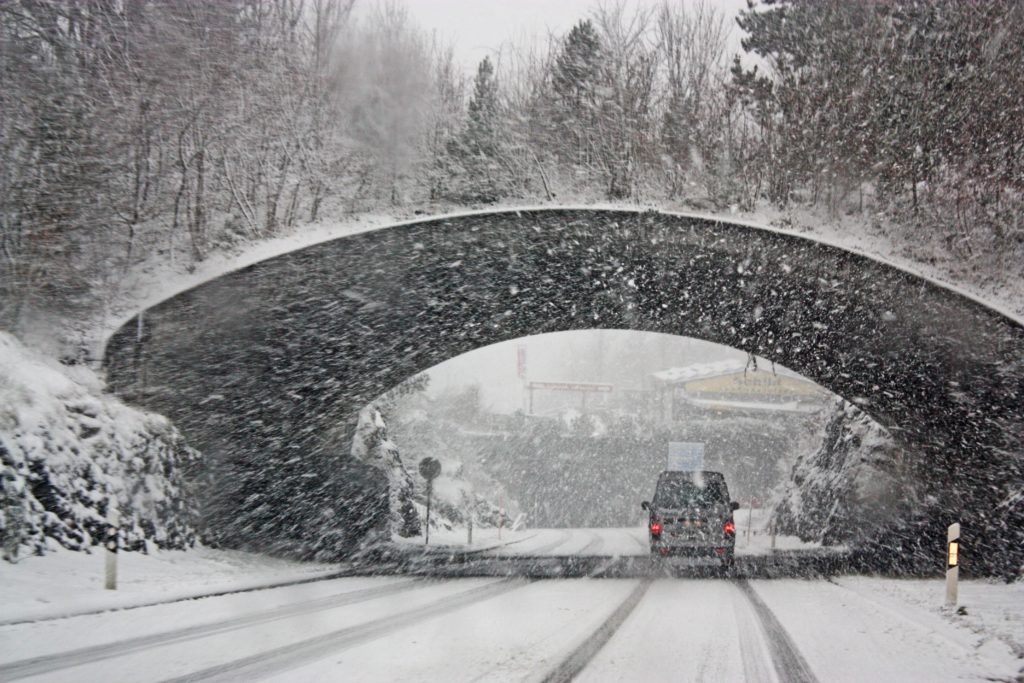The season of ice and snow is upon us. It won’t come as any surprise to most drivers that in cold-weather states that winter weather can create risky driving conditions. According to the U.S. Department of Transportation’s Federal Highway Administration (FHA), 24% of weather-related crashes each year occur on snowy, slushy, or icy pavement. These automobile accidents result in more than 116,000 injuries and about 1,300 fatalities. That’s in spite of state and local governments around the country spending more than $2 billion annually on snow and ice control efforts.
But, having a general sense that snow-covered and icy roads can be dangerous isn’t enough to help you avoid winter weather hazards on the road.
Here’s what you need to know to keep yourself, your passengers, and others sharing the road safer this winter.
- Make sure your vehicle is properly maintained. Of course, good vehicle maintenance is important year-round. But, winter weather conditions can magnify minor issues. For example, driving with worn treads is never optimal, but the lack of traction associated with balding tires can be even more dangerous on snow-covered roads. Keeping your brakes in peak condition is especially important when road conditions are already impacting braking time. And, snow, sleet, and blowing and drifting snow impact visibility, making it critical that all vehicle lights are in good working order before you get on the road.
- Slow down. Sometimes, it’s obvious from the feel of the road that you need to slow down and exercise greater care on the drive. But, that’s true whether you notice it or not. Braking time is dramatically increased on snowy and icy roads, and braking suddenly can send you into a dangerous slide or skid. When you’re driving on slushy, icy, or snowy surfaces, drive more slowly and leave more space between you and the car in front of you. And, exercise the same care when visibility is low, since the time available to react after you see another vehicle or other obstruction may be significantly reduced. The FHA says average arterial speeds are reduced by 30-40% when roads are slushy or snowy, and highway speeds cut by 5-40% in heavy snow.
- Stay vigilant. Even when roadways appear clear, be prepared for patches of nearly-invisible “black ice.” While bridges present the greatest risk of unexpected ice, play it safe and recognize that icy patches may appear anywhere during the winter months. And, of course, with both visibility and stopping time reduced, it is all the more important to avoid distractions and give yourself maximum possible response time.
- Take charge of your vehicle. If you’re like many drivers, you’ve probably never read the note in your owner’s manual that says you shouldn’t use cruise control on slippery roads. If you hit a slick patch with your cruise control engaged, the car may continue to attempt to accelerate, sending you into a skid. With your foot on the gas, you’ll have more control and notice the problem a second or two earlier—often, enough time to make the difference between maintaining control of the vehicle and a traffic crash.
Often, people view winter weather traffic accidents as a fact of life. In truth, though, a significant percentage of snow-and-ice accidents could be avoided if drivers exercised every caution in caring for and operating their vehicles. Taking these and other winter-weather precautions will help you reduce the risk on the road. If others fail to take these and other safety measures, they may be liable for any injuries and other damages sustained in a traffic accident, even if weather conditions played a part in the crash.

